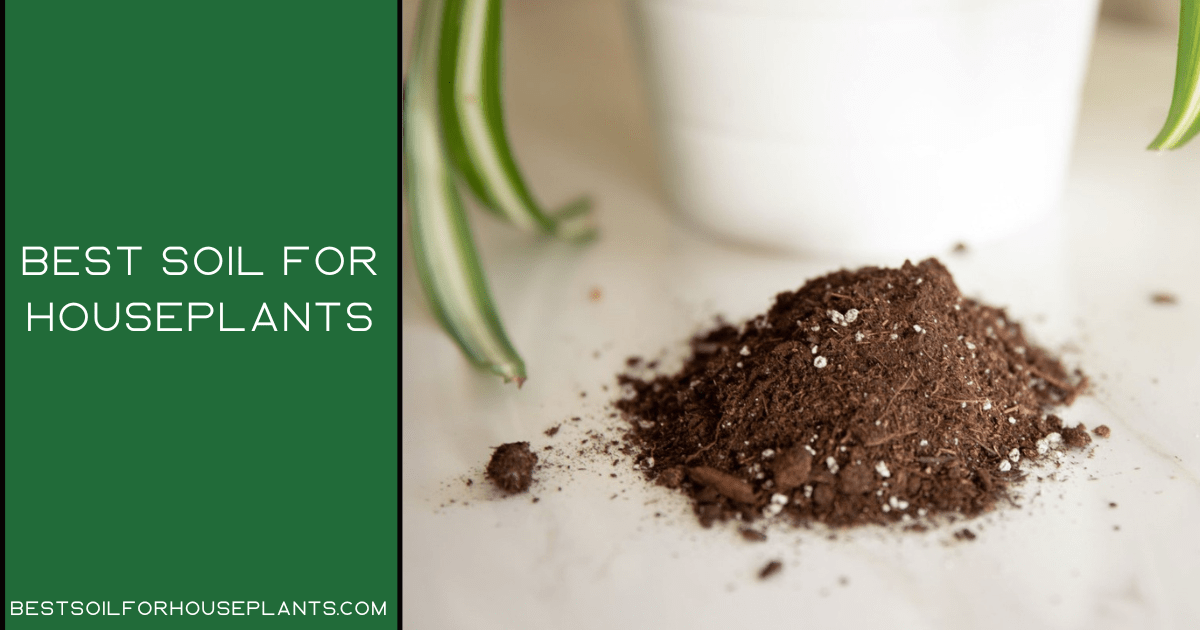Choosing the right potting soil can be crucial to your plant’s growth and development. You might be confused by all kinds of soils, mixes, and different additives out there, so we will cover most of them and give you some recommendations so you can choose the best potting soil for your houseplant.
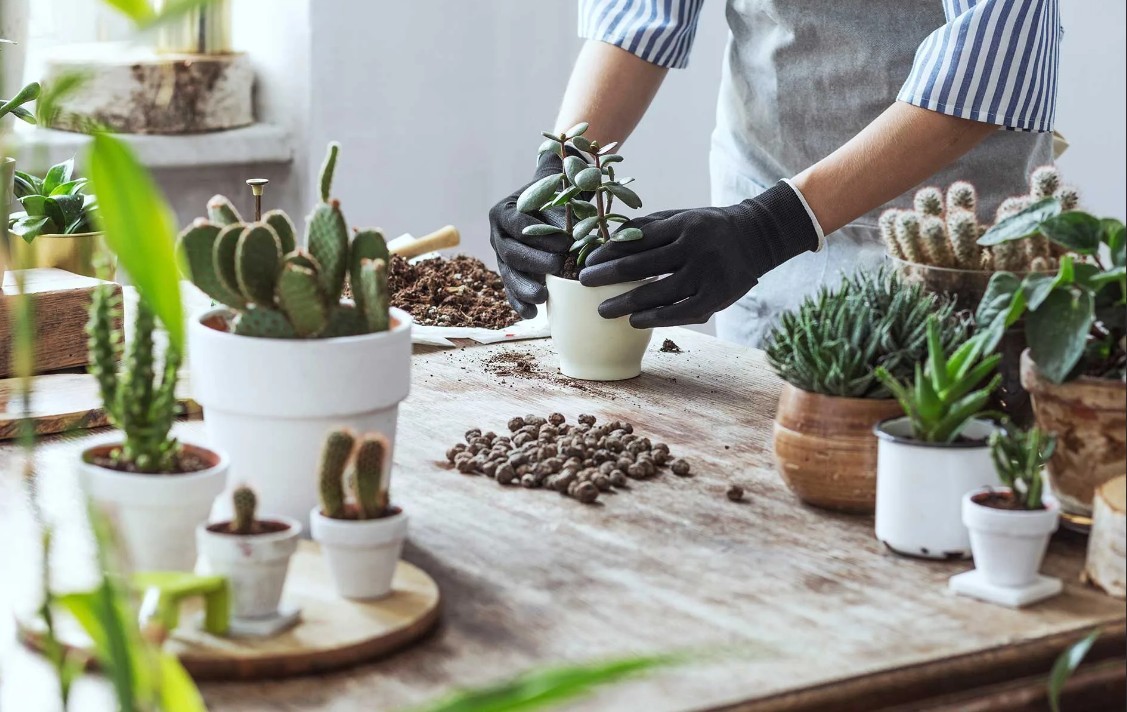
First, let’s figure out what some basic terms and factors mean.
- Potting soil, or a potting mix – these two terms are often used interchangeably, the only difference is that potting soil sometimes contains real dirt, and potting mix never does. Potting mixes are basic substrates that serve to oxygenate and provide nutrients for plants and are typically composed of peat moss, shredded pine bark, and minerals like perlite or vermiculite. Peat moss and minerals provide aeration and are found in most of the potting mixes. The bark stops the soil from ‘slumping’ – sinking when watered.
- pH, or acidity. It is an important factor that shows how acidic or alkaline your environment is. If the soil pH is out of the recommended range, the nutrients will not be absorbed by the plant properly.
- Porosity. It is the space between soil particles. The roots’ ability to access oxygen depends on it. Porosity is increased by minerals, bark pieces, etc.
- The water-holding capacity of a plant shows whether the plant prefers a drier or more humid substrate.
- Water retention. This is a property of soil that indicates how much moisture it can hold between waterings. The plants with low water-holding capacity prefer low water retention, and plants with high water-holding capacity prefer the soil with a higher level of water retention – simple enough.
- Drainage. Good drainage means that soil will dry out at a moderate rate and will not retain too much moisture or lose all of the water too fast. It can be achieved by adding minerals, sand, orchid bark, etc.
- Aeration. Aeration shows how much airflow goes through the soil. It is linked to porosity and drainage – the more porous your soil is, the more aeration you have. To develop properly, plants’ roots need enough access to the air that goes through the soil.

There are two different types of soils: soil for indoor plants and outdoor plants. This is a rough approximation because it is a spectrum of different soil mixes. But this approximation will help you get the idea.
- Outdoor soil is usually referred to as ‘garden soil’. Garden soil is supposed to be mixed with soil in the ground to improve its quality. Outdoor soil is usually dense and therefore too heavy for most houseplants. It holds too much moisture, which can cause rotting and other problems. So outdoor-plant-specific soil is not our choice for houseplants.
- Indoor potting soil is designed to have high porosity because indoor plants usually take longer to dry out between waterings and their roots need more access to the air. Therefore, soil for indoor plants contains perlite, vermiculite, moss, etc.
So, when choosing the best soil for houseplants, look for potting mixes labeled “indoor potting soil” or “well-draining houseplant soil.” As we mentioned, there is a spectrum, so you can often see mixes labeled ‘regular’ or ‘all purpose’. These mixes are suitable for both outdoor and indoor plants and are usually not plant-specific. They are light, pH neutral, pre-mixed with fertilizer, and have minerals for aeration. We will give you some examples of them too.
You can also find out which one is better to choose soil for tomatoes in pots.
Many different soil additives affect drainage, porosity, humidity, and other things. Here is the list of the most common additives:
- Sphagnum moss and peat moss
- Coco coir
- Clay
- Minerals: perlite and vermiculite
- Sand
- Orchid bark
- Worm castings
Now we will review each one of them.
Mosses
Sphagnum Moss: Sphagnum is a genus of about 380 species of moss that grow in marshlands all over the world. Dead and dried sphagnum moss is used for growing plants. It has a great water holding capacity because of the small dense moss leaves.
Peat Moss: Harvested from the same sphagnum plant, peat moss is the layer of decayed sphagnum moss, which naturally occurs below the surface of the soil in natural peat bogs. It holds lots of moisture and enhances soil aeration and nutrient absorption. It can also affect the balance of microorganisms in the soil in a positive way. Peat moss has a pH of around 4.0, which is pretty acidic. That is why it is often used to balance the pH levels of alkaline types of substrates such as clay. Peat moss is great for plants that prefer wet but not too damp environments.
Harvesting peat moss isn’t sustainable though, because one has to dig up the swamp in order to reach the moss, and it takes hundreds of years for the habitat to regenerate. That is why some indoor gardeners try to avoid all peat moss products and look for alternatives. One of the best alternatives is coco coir, which we will discuss down below.
Coco coir
Coco coir is basically the outer fiber of coconuts. Coconuts can be collected without harm to the habitat they grow in. Coconut coir provides pretty much the same benefits as peat moss. It is lightweight, which also increases airflow in the substrate, and has neutral pH, which makes it different from moss. As a separate additive, coco coir is dried and packed into bricks. But you can also find potting mixes that contain coco coir instead of moss, we will give you some examples of those down below.
Clay
Soil with added clay is pretty dense. It retains lots of moisture and has a high pH of about 8-10 (alkaline range). Plants develop slowly and remain compact in clay soil. Many species of grasses, petunias, and hostas prefer soil with clay mixed in.
Minerals: perlite and vermiculite
Perlite. Perlite is found in almost any potting soil for indoor plants. You can see it in the form of little white pieces. Perlite is volcanic glass collected and heated to high temperatures to make the compound more porous. Due to its porosity perlite has low water retention and is lightweight, which prevents soil compaction and sinking.
Vermiculite. Vermiculite is a naturally occurring mineral generally used as a moisture-retentive substrate. It is less porous than perlite, so it holds more water and provides less aeration for the plant roots. Despite this, vermiculite is still not too heavy for indoor plants and doesn’t retain too much water. Just like perlite, it prevents soil compaction.
If your type of plant doesn’t prefer lots of moisture and needs to dry out between waterings, you should choose perlite. That is why it is often found in succulent mixes.
If the plant prefers moist but not too soggy soil, then you should choose vermiculite.
Sand
Sand is a soil additive that is usually put in succulent soil mixes for plants that naturally grow in sandy environments. Obviously, it is good for cactuses, succulents, and other drought-tolerant plants. Sand improves drainage and aeration. The sand alone cannot serve as a self-sufficient substrate, because it drains quickly and does not hold nutrients as moss or dirt does. You should also avoid products labeled ‘play sand’, which are not designed for growing plants. Sandy soil is often used in commercial cacti and succulent mixes.
Orchid bark
Despite its name, orchid bark is not used just for growing orchids. It is basically dried tree bark usually collected from softwood trees: pine, cedar, or spruce. It can be used as a great soil additive for many plants. And orchids are the ones that like it indeed.
Orchid bark has all of the features that many other additives have: it helps with aeration, water flow, and soil compaction. Using too much orchid bark can make the soil dry out too quickly though. Bark has a slow decomposition rate and can serve as a cheap filler for your potting mix.
Worm castings
Not exactly an additive. Worm castings also act as a fertilizer. Worm castings are worm feces containing some nutrients and bacteria. These microorganisms help fight plant diseases and might repel some insects; nutrients also improve the soil.
The castings, just like sand or minerals, should not be added to soil in large amounts. If you are using a soil mixture in an 8-inch pot, you can add about 8 – 16 tablespoons of worm castings – this would be more than enough.
Even though using worm castings is just as easy as using diluted fertilizers, they might not be enough for some plants. Picky species of plants may need specific fertilizers instead of just worm castings, and you should figure it out for every picky plant individually. Most of the indoor plants will accept the castings though.
Here are some recommendations for the best soil
Standard, regular mixes
1. Miracle-Gro Premium Potting Mix (8-quart)
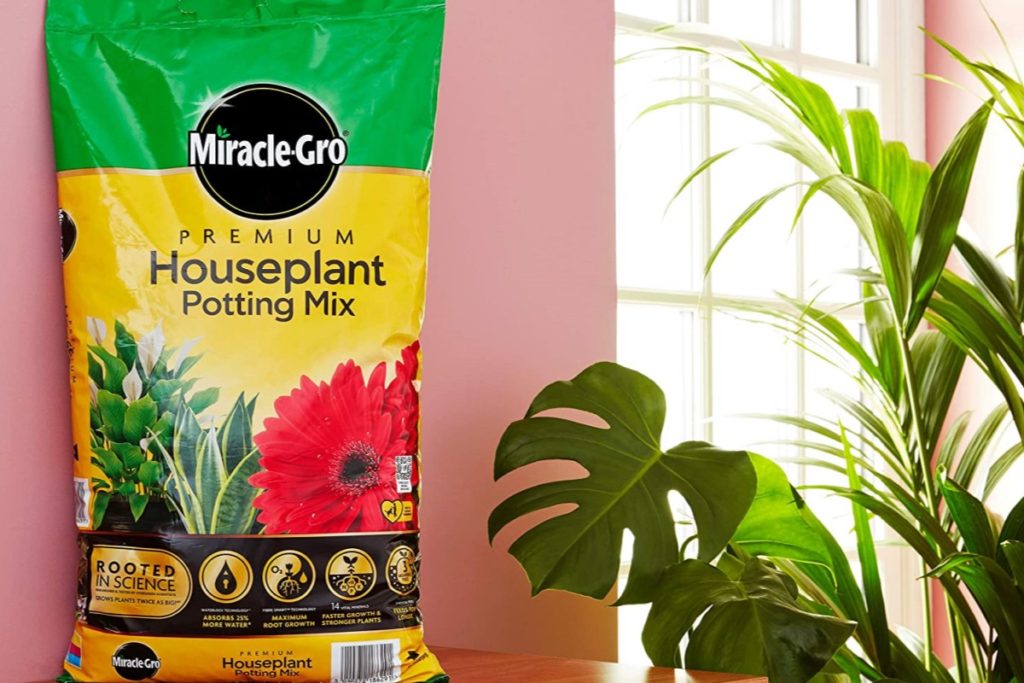
This is a standard and relatively cheap option, but it is suitable for many regular plants, both outdoor and indoor. If you are not sure whether your plant will like a standard potting mix or not, you can look at the labels when you’re at a store. If you don’t see your particular plant mentioned, then pick a regular potting soil like this one. It makes great soil for indoor plants.
2. Miracle-Gro Indoor Potting Mix (6-quart or 16-quart)
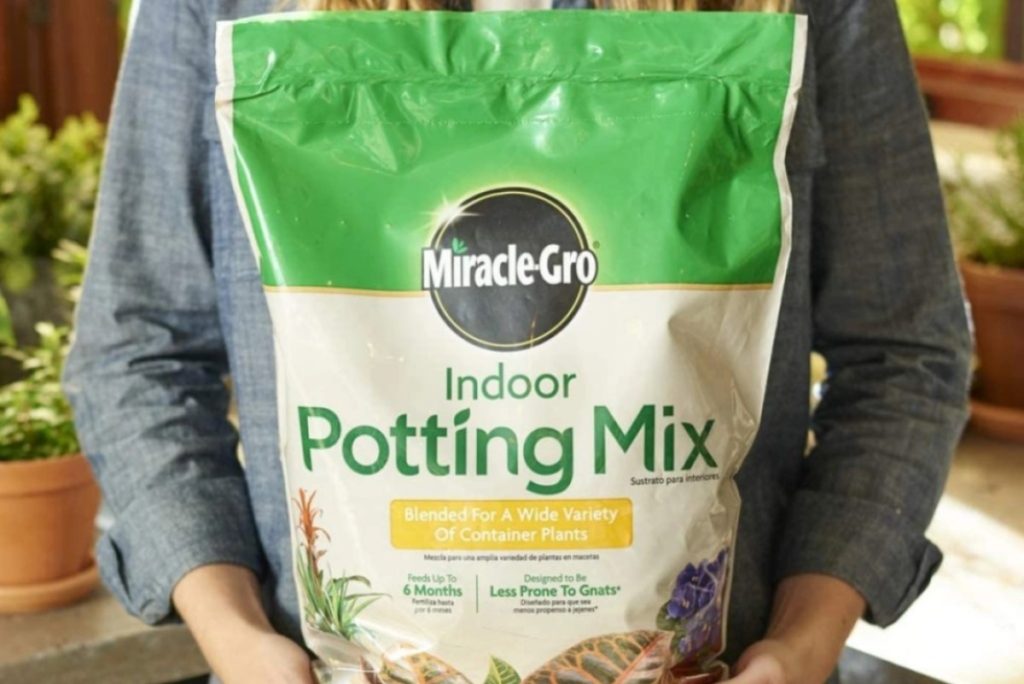
This potting mix is designedfor indoor plants specifically. It is blended with natural compounds that repel fungus and insects and has a mixed-in fertilizer that can feed your plant for up to 6 months.
3. Burpee Organic Premium Potting Mix (9-quart)
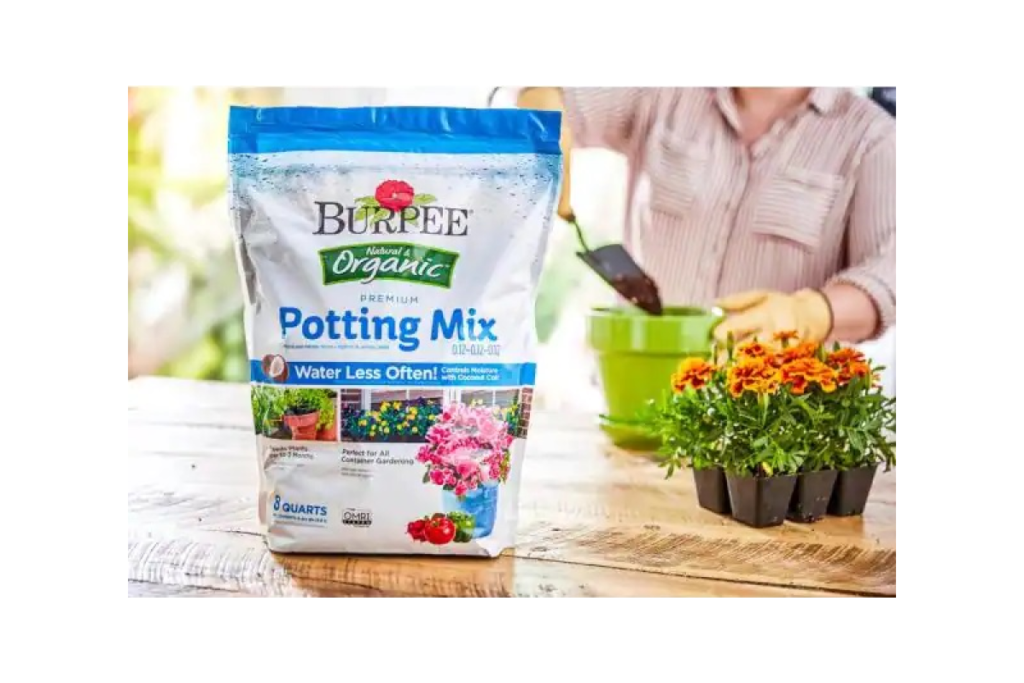
This indoor potting mix from Burpee is also a great standard mix for most houseplants. It contains cocoa coir which requires less frequent waterings and makes the mix lightweight.
The best soil for fiddle-leaf figs and Monsteras
1. Fiddle Leaf Fig Plant Resource: Premium Fiddle-Leaf Fig Potting Soil (8-quart)
Fiddle-leaf fig and Monstera are really sensitive and reject damp soil. This soil mix provides great drainage and has a light, porous structure for good airflow, which makes it perfect for growing Monsteras and fiddle-leaf plants.
2. FoxFarm Ocean Forest Organic Potting Soil (12-quart bag)
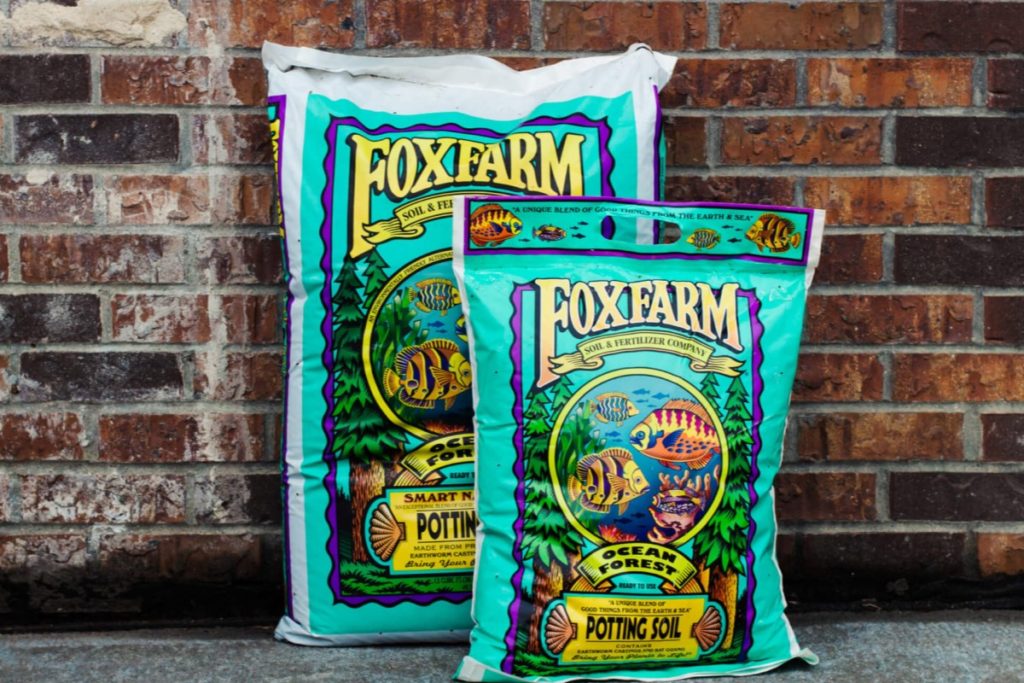
The mix includes peat moss and forest compost which can be found in other standard soils. But it also contains crab and fish meal and earthworm castings that we talked about earlier, which makes it a great nutrient-rich potting soil. The soil is recommended for many plants, especially for Monsteras and fiddle-leaf figs.
Mixes for cacti and succulents
1. Hoffman 10404 Organic Cactus and Succulent Soil Mix (4-quart or 10-quart)
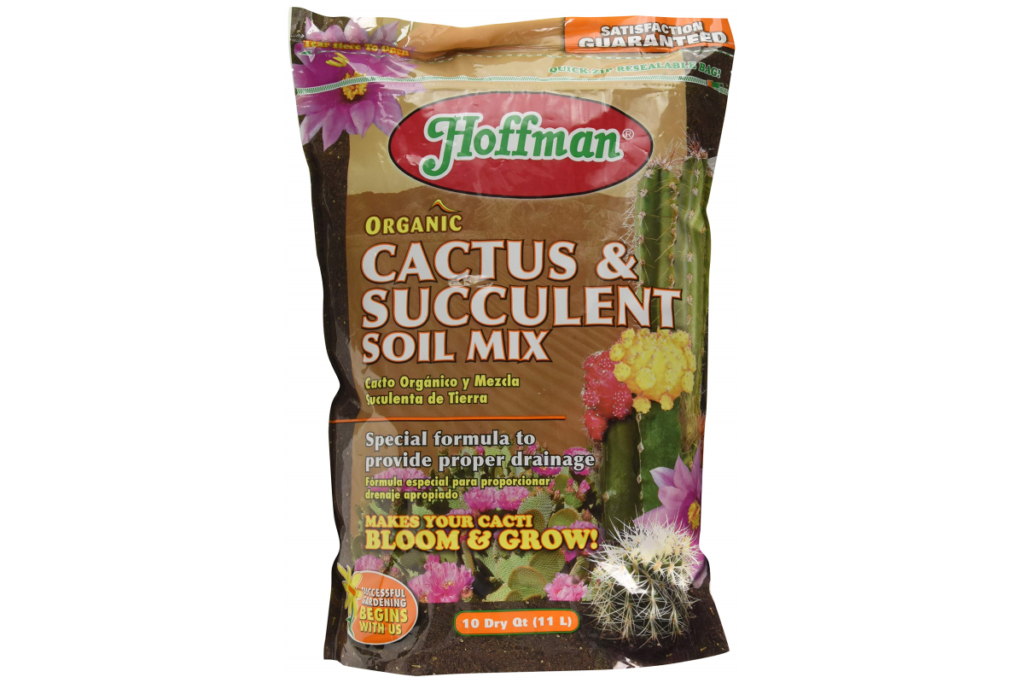
Succulents and other plants that naturally grow in dry and sandy environments don’t do well enough in general, regular potting soil. The main problem is root rot due to a lack of good drainage. That’s why you should consider these succulent and cacti mixes.
The Hoffman succulent mix has a rich combination of organic matter and inorganic materials: Canadian sphagnum peat moss, reed sedge peat, sand, limestone, and perlite. It works well with different succulents that can tolerate a bit of moisture, e.g. Aloe vera or jade plants. However, it is not well-suited for cacti that prefer as little water retention as possible, because the water holding capacity of the mix is a bit too high. If you’re looking for good cactus-specific soil, see the Miracle-Gro Cactus soil mix below.
2. Miracle-Gro Cactus, Palm, and Citrus Potting Soil Mix (8-quart)
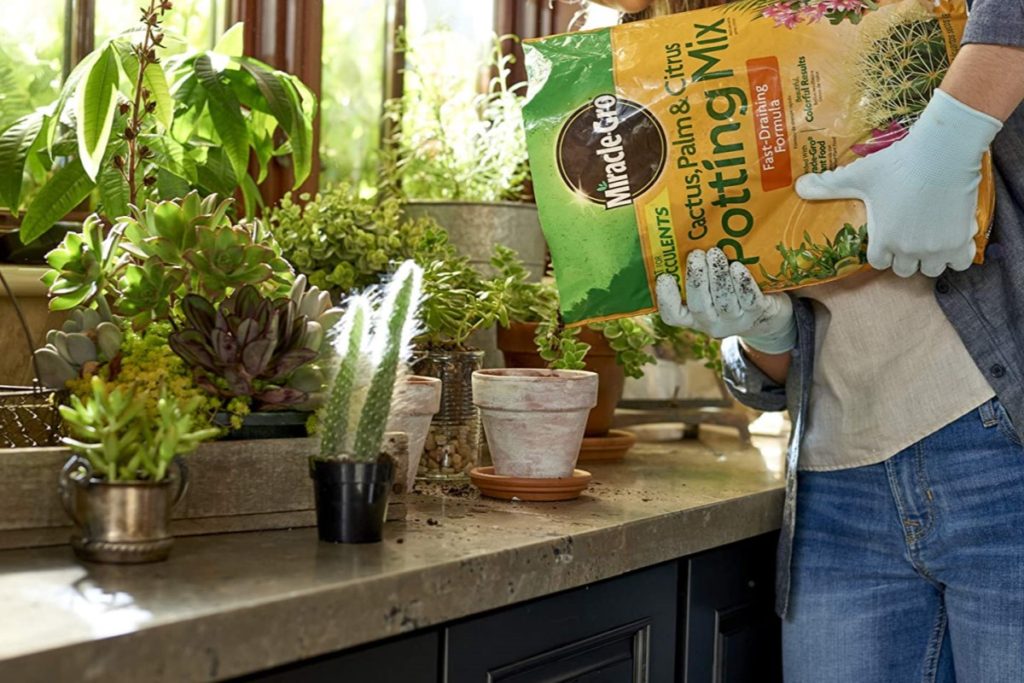
This Miracle-Gro potting soil is perfect for taking care of succulents and cacti too. It includes sand, perlite, and peat in it, which works great for all plants that require any excess water to be drained quickly. Unlike the previous soil, this one drains extremely well, and it will be difficult to overwater your cactus even if you pour lots of water into the pot.
Soil mixes for orchids
1. rePotme Phalaenopsis Monterey Dark Imperial Orchid Potting Mix (2, 4, 8-quart bags)
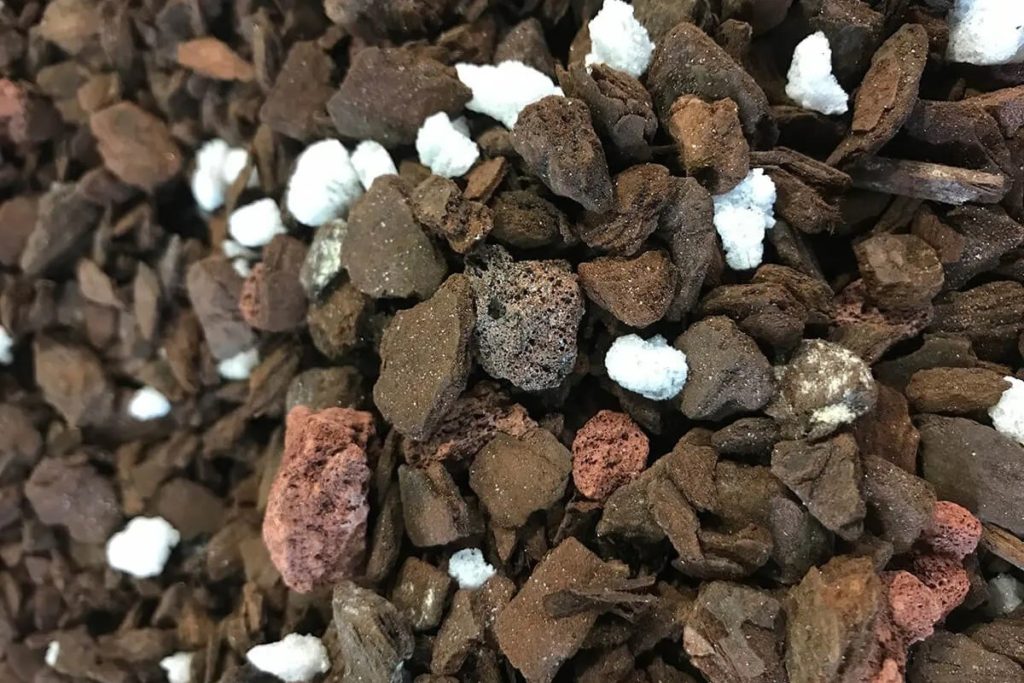
When it comes to orchids, you should choose only the best indoor potting soil you can find! This soil mix is made with a slow-decomposing blend containing some Monterey pine bark, perlite, puffed clay, and Sphagnum moss from New Zealand. The bark blend is well-sized and doesn’t have large bark pieces that make compact potting complicated. The New Zealand sphagnum moss is known for its ability to prevent root rot.
2. Perfect Plants Organic Orchid Potting Mix (4-quart)
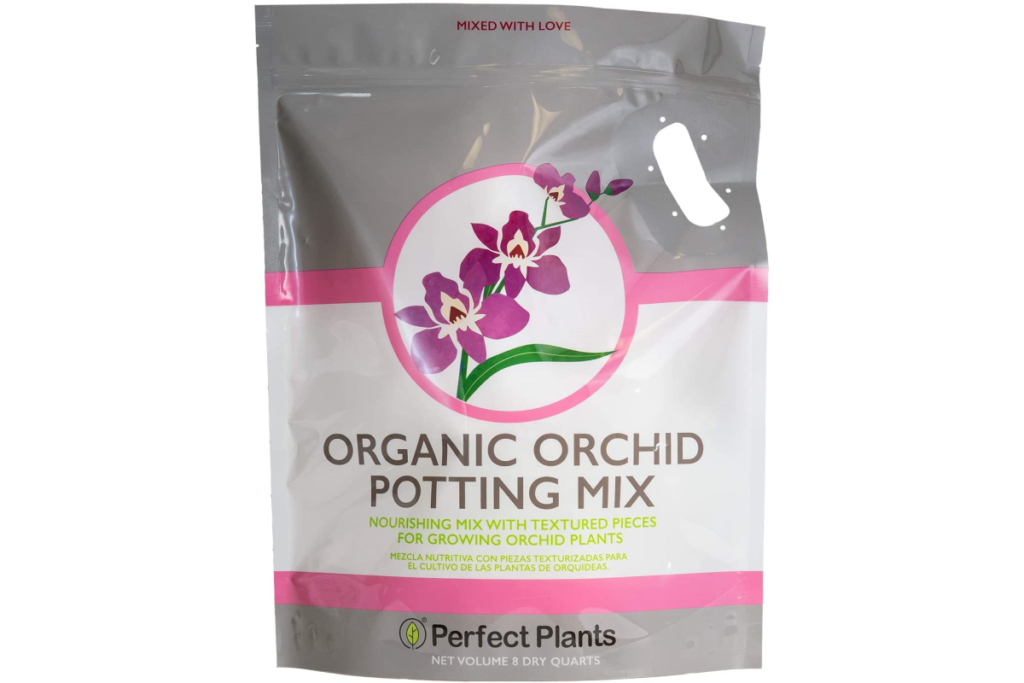
This organic potting soil consists of light pine bark, some charcoal, spongey rock, and even coconut chips. The charcoal is there for absorption of excessive salt from fertilizers. Spongey rock helps with the pH balance, and coconut chips expand the soil and make it easier for the aerial orchid roots to grow and climb the substrate. This kind of potting soil is actually well-suited for many plants with aerial roots.
Some common soil problems you might run into
White fungus in houseplant soil
If you see a white powdery mold appear on the surface of your soil, most likely it is a saprophytic fungus. It does not harm the plant, but it is an indicator that there are some other more important issues with the soil that you need to fix.
Saprophytic fungus feeds on decomposing material in damp soil only. There are so many microorganisms living in your soil that the fungus can exist all the time but becomes visible only when you overwater the plant.
It looks quite unpleasant, so you might want to get rid of it. Simply scrape it off the surface of the soil and aerate the top soil layers using a fork or another tool. This is done to help improve the airflow. If the plant tolerates low humidity levels, let the soil dry out before watering it again. Then you should adjust your watering schedule so the soil doesn’t get too damp anymore.
If the fungus shows up over and over, you should repot the plant into fresh, high-quality soil. Clean the pot from top to bottom before repotting and do not use the old soil again.
Yellow mold in houseplant soil
It is also a sort of saprophytic fungus that feeds on undecomposed material. This mold has a slimy appearance with yellow heads sticking out, which looks even more disgusting than the white mold.
It is still not harmful to the plant though. But just like the white fungus, it could indicate that you are overwatering or not allowing the soil to dry out between waterings.
The method of getting rid of it is the same – scoop up the fungus and throw it away, aerate the top layer of the soil and let it dry out a bit before watering it again. If that doesn’t help, repot the plant using fresh soil.
Mushrooms growing in houseplant soil
Sometimes you may even find some little brown or grey mushrooms growing in your houseplant pot. Mushrooms are fungi too, so they don’t threaten your plant. If you want to get rid of them, pluck them out and throw them away.Then aerate the top soil layer and let it dry out.
Do not try to eat the mushrooms – you don’t know the species and whether they are poisonous or not.
Conclusion
Choosing the best potting soil for your houseplants is essential for their proper development. Before buying an all-purpose potting soil mix, try to find out what your local shops offer for a particular indoor plant and the climate zone you live in.
We also recommend keeping some perlite, vermiculite, LECA, or other soil-drainage and aeration supplements at all times on hand. This way you’ll be able to quickly mix them into your potting soil if you notice it being too damp.
Adding perlite or vermiculite to some of your old potting mixes can also help a lot because even the best draining potting mixes often compact over time.
You will also find that indoor plants suffer more often from poor drainage than their outdoor cousins do. That is why we advise you to make your potting mix choice based on your personal observations instead of general recommendations.
Now you can choose the best soil for houseplants you have from our selection and enjoy the results.
Do you know about overwatering? You should read about it in out web.
Can you reuse soil for houseplants?
No, you should not reuse the old houseplant soil, just throw it out and repot your plant with fresh soil. Any fertilizer that was in the mix (like worm castings or a specific fertilizer) is completely gone by now, so give fresh soil and your plant will be way better.
What type of soil is best for indoor plants?
The best type of soil for indoor plants is a well-draining, nutrient-rich potting mix specifically formulated for indoor plants. This type of soil is typically a combination of peat moss, vermiculite, and perlite, and may also contain added fertilizer and/or other organic matter. It should be light, fluffy and free from pests, diseases and weeds.
Can I use garden soil for indoor plants?
No, it is not recommended to use garden soil for indoor plants. Garden soil is often too dense and heavy for indoor pots and can contain pathogens or pests that could harm indoor plants. Indoor plants typically require a lightweight, well-draining potting mix specifically formulated for indoor use.
How often should you change the soil in houseplants?
It is recommended to change the soil in houseplants every 1-2 years, or when the plant has outgrown its pot or the soil appears to be depleted. However, this can vary depending on the type of plant and how often it is fertilized. It’s also important to check for pests or diseases. A good way to know when it’s time to change the soil is to check the plant’s growth and health, if it’s not doing well, it might be time to change the soil.

